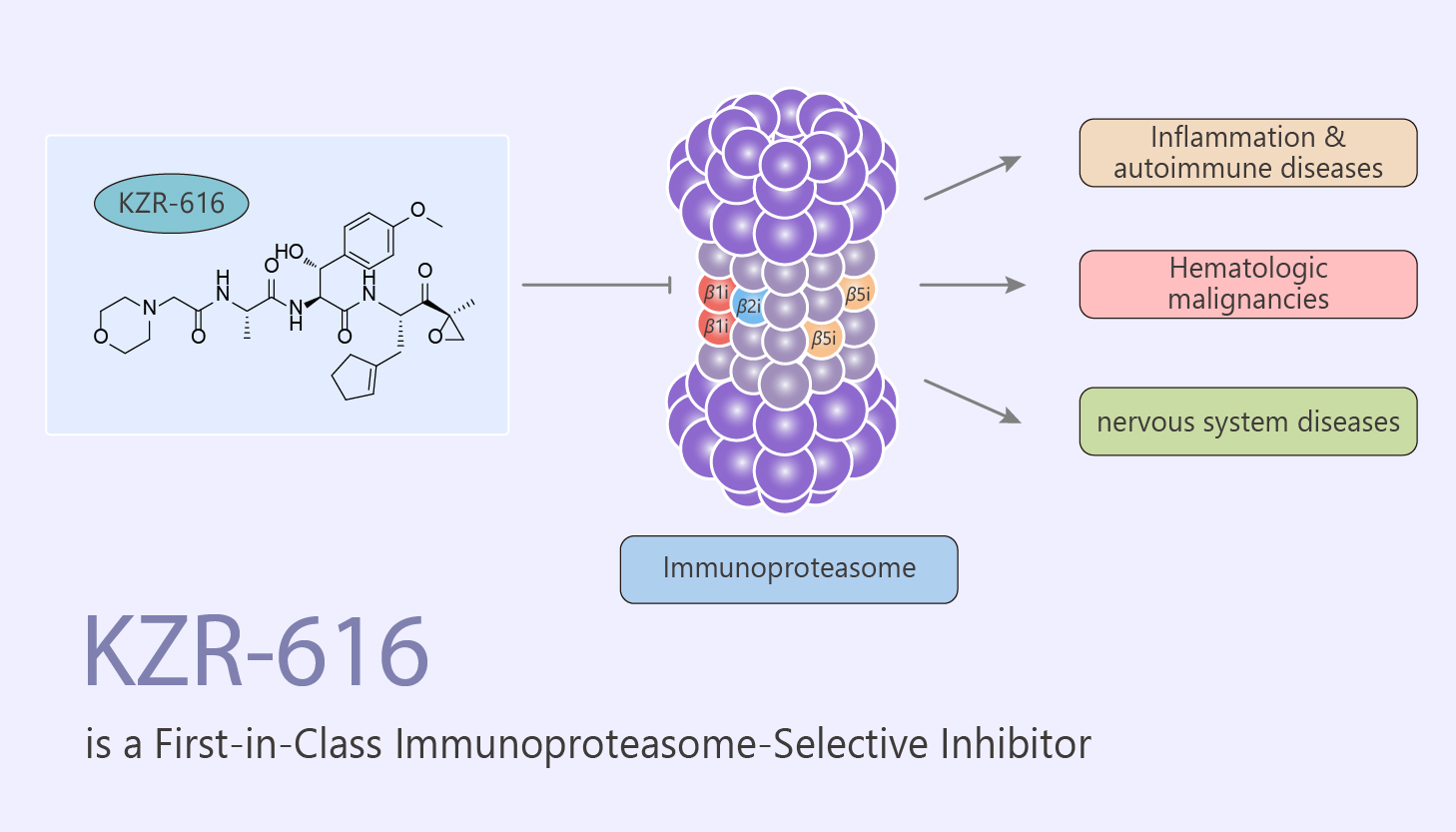Proteasomes control several cellular processes. They regulate protein degradation, mediate protein homeostasis. Proteasome function is tuned between a ubiquitously expressed constitutive proteasome and an immuno-optimized form, or immunoproteasome. The constitutive proteasome contains two copies each of three proteolytic subunits within its 20S core, β1, β2, and β5. However, the immunoproteasome replaces these with low-molecular-mass polypeptide-2 (LMP2 or β1i), multicatalytic endopeptidase complex-like 1 (MECL-1 or β2i), and low molecular mass polypeptide-7 (LMP7 or β5i), respectively. An immunoproteasome is a specialized form of the proteasome. The lymphocytes and monocytes of jawed vertebrates mainly express it. In addition, immunoproteasome is responsible for the generation of antigenic peptides for cell-mediated immunity. Overexpression of immunoproteasome results in a wide range of diseases including malignancies, autoimmune and inflammatory diseases. In this study, KZR-616 is an immunoproteasome-selective inhibitor. It selectively targets the LMP7 and LMP2 subunits of the immunoproteasome.

KZR-616 is a first-in-class inhibitor of the immunoproteasome. Moreover, it selectively targets the LMP7 (IC50: 39/57 nM=hLMP7/mLMP7) and LMP2 (IC50: 131/179 nM=hLMP7/mLMP7) subunits of the immunoproteasome. KZR-616 also inhibits the MECL-1 subunit (IC50=623 nM) and constitutive proteasome β5 subunit (IC50=688 nM). KZR-616 maintains LMP7 and LMP2 selective inhibition in MOLT-4 cells. In addition, KZR-616 shows a comparable cytokine inhibition profile peripheral blood mononuclear cells (PBMC). Furthermore, it potently blocks inflammatory cytokine production in vitro. KZR-616 is effective in treating systemic lupus erythematosus in a mouse model. In addition, it shows efficacy in the anti-collagen antibody-induced arthritis (CAIA) model.
In summary, KZR-616 is a selective immunoproteasome inhibitor, targets the LMP7 and LMP2 subunits of the immunoproteasome. KZR-616 has the potential for multiple autoimmune diseases treatment.
Reference:
Johnson HWB, et al. J Med Chem. 2018 Dec 27;61(24):11127-11143.